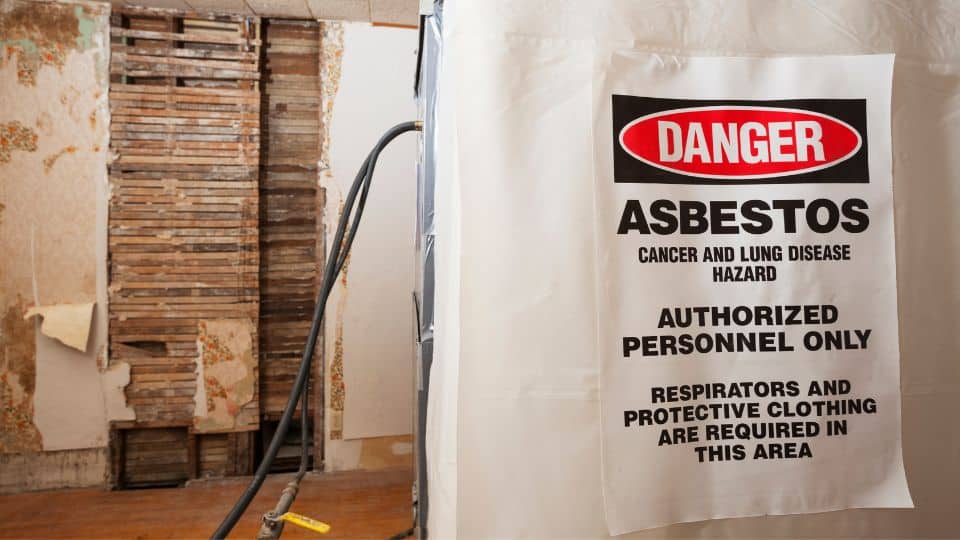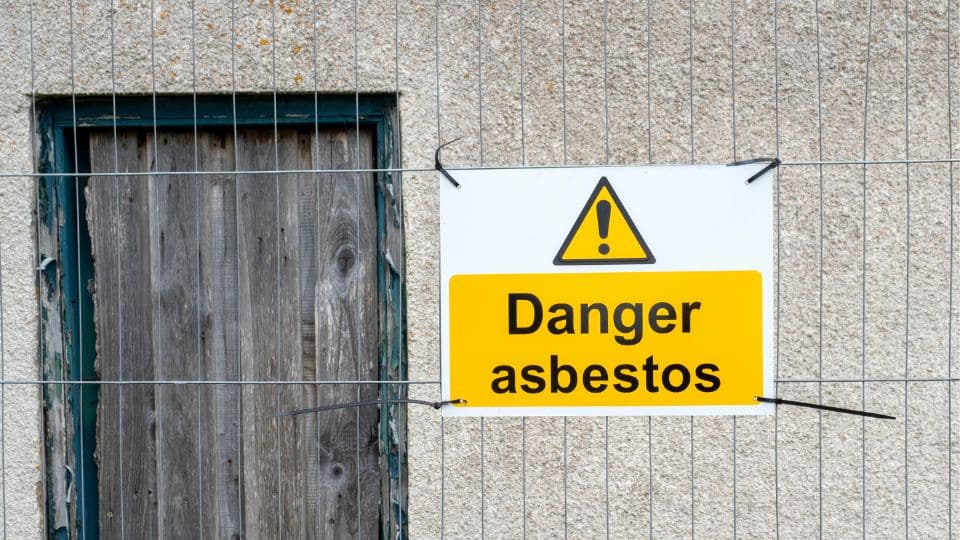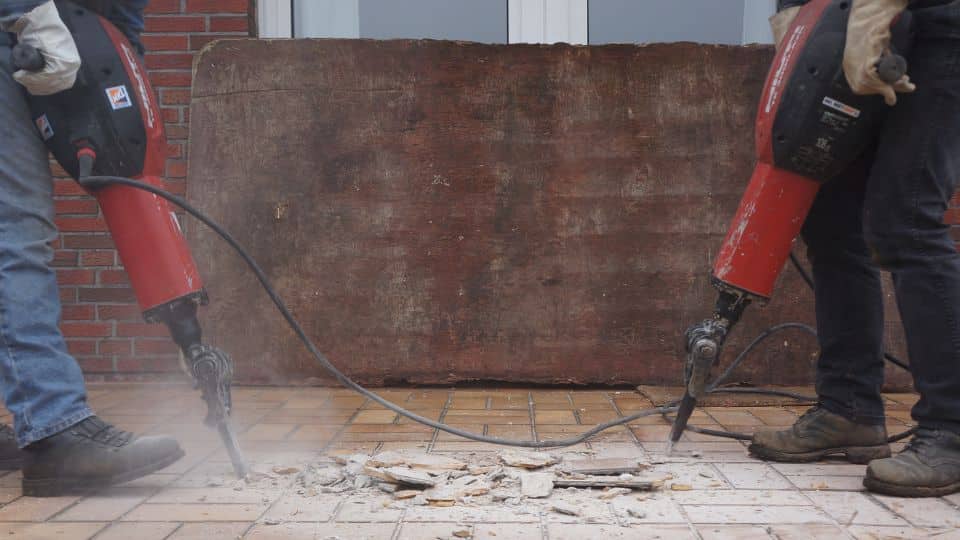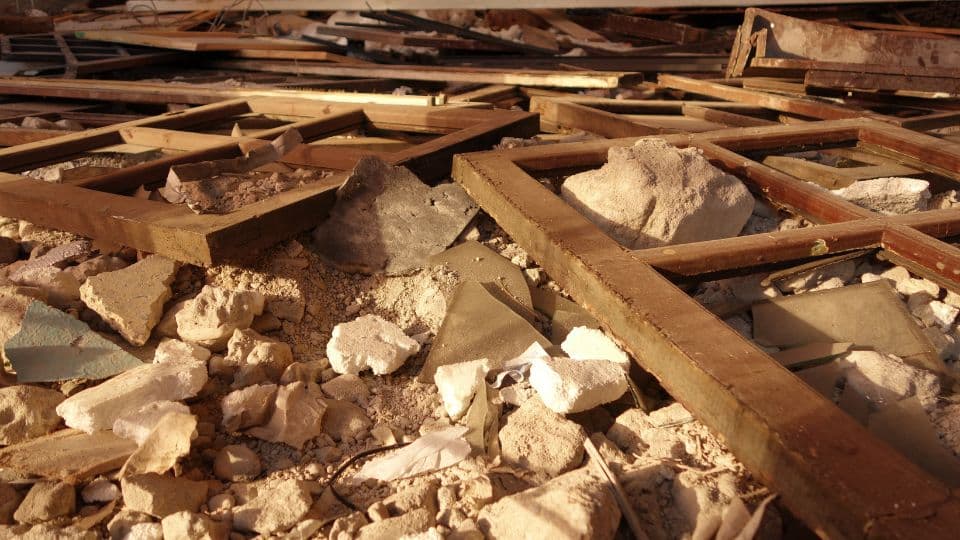Asbestos, a naturally occurring fibrous material, was once hailed as a “miracle material” in construction due to its remarkable properties: resistance to fire, heat, and corrosion, as well as its excellent insulation capabilities. Today, however, asbestos is a dreaded word in the real estate industry and is widely recognized as a “silent killer”. Inhaled asbestos fibers can become lodged in the body, significantly increasing the risk of serious illnesses, including asbestosis, lung cancer, and mesothelioma.
For homeowners in Vancouver and across Canada, understanding where this toxic material may be hidden is the first step toward reducing anxiety and ensuring safety. If your home was constructed before the 1990s, it carries the highest risk of containing asbestos-containing materials (ACMs).
This comprehensive guide will detail the history of asbestos use in Canada, pinpoint the common hiding spots within older homes, and outline the necessary steps—as recommended by Canadian health and safety authorities—to protect yourself and your family.
The Asbestos Legacy in Canadian Construction
The widespread use of asbestos in construction and other products throughout the 20th century means that many older homes still contain these materials. In Canada, specific regulatory milestones define which structures are most likely to pose a risk:
- Peak Use: Asbestos was heavily relied upon until the late 1970s and early 1980s.
- Early Restrictions: In 1976, Canada banned the use of asbestos in fireproofing and insulation due to recognized health risks. Restrictions on products containing asbestos increased further in the 1980s as part of the “Asbestos Control Policy”.
- Near-Total Phase Out: By 1990, all forms of manufacturing with asbestos had been severely limited or banned throughout the country, although some industry exceptions existed (e.g., in the automotive sector).
- Final Ban: The comprehensive, final ban on all forms of asbestos and all products containing it was put into effect by Health Canada in 2018.
Despite the final 2018 ban, ACMs remain a pervasive problem in older infrastructure. Homes built between the 1950s and late 1980s are considered to be at the highest risk of containing these materials. Even homes built into the early 1990s may contain legacy materials that contractors had on hand.
For homeowners in British Columbia, the provincial workplace safety authority, WorkSafe BC, offers resources to address these hazards, often in collaboration with the Canadian Centre for Occupational Health and Safety (CCOHS).
Identifying Asbestos: Common Locations in Vancouver Homes
Asbestos fibers were mixed into a wide variety of construction materials to enhance strength, durability, and fire resistance. Because asbestos cannot be positively identified by sight alone, materials must be tested by an accredited laboratory. However, knowing the common locations can guide professional inspection efforts:
1. Insulation and Mechanical Systems
Insulation materials are some of the most common and often highly friable (easily crumbled) sources of asbestos in Canadian homes.
- Vermiculite Insulation (Attics and Walls): Vermiculite-based insulation, often found in attics, may contain asbestos. This material should not be disturbed in any way, nor should children be allowed in the attic. If this type of insulation is present, homeowners are advised to seal all cracks and holes in the ceiling of the rooms below, including around light fixtures and the attic hatch, to prevent the insulation from falling through. Some vermiculite may have fallen into wall spaces, necessitating the sealing of cracks around electrical outlets, baseboards, and window and door frames.
- Pipe and Duct Insulation: Asbestos was used extensively as pipe and duct coverings, and often found wrapped around older heating systems, thermal boilers, and hot water tanks. Deteriorated insulation around pipes poses an exposure risk. Cutting or ripping away this old insulation can easily release fibers into the air.
- Furnace and Boiler Components: Thermal boiler and fireplace insulation, as well as electrical switchboard panels and plumbing fixtures, may contain ACMs.
2. Walls and Ceilings
Asbestos was integrated into interior finishes to add texture and reinforce structural components.
- Textured Ceilings (“Popcorn Ceilings”): Textured ceilings, commonly known as “popcorn ceilings,” are a well-known source of asbestos. Scraping, sanding, or cutting into these ceilings is a high-risk scenario that can release microscopic fibers, which can pass easily through a standard dust mask.
- Drywall and Joint Compounds: Asbestos was used in drywall, drywall joint compounds, plaster, putties, and textured wall coatings. Drilling through drywall that contains asbestos releases fibers into the air. Sanding these older water-based coatings, spackling, or sealants may also release fibers.
- Ceiling Tiles: Acoustic ceiling tiles, often found in basements or utility rooms, may contain asbestos.
3. Flooring
Flooring materials and their adhesives frequently contained asbestos, especially those installed before the mid-1980s.
- Vinyl Floor Tiles: Vinyl floor tiles, particularly the smaller 9×9 inch tiles common in mid-century homes, frequently contained asbestos. However, 6×6 and 12×12 tiles were also sold containing asbestos. Flooring materials made in the U.S. before 1986 are particularly suspect, and this applies to imported materials used in Canada during this period.
- Sheet Flooring and Backing: Resilient sheet flooring installed before about 1978 may have asbestos fibers in the felt backing material.
- Adhesives (Mastic): The bituminous adhesive (mastic) used to secure both floor tiles and sheet flooring frequently contained asbestos. Using a scraper to remove old flooring can release dangerous fibers from the tile or the mastic.
4. Exterior Materials
The exterior of older homes often features asbestos-containing products for weather resistance and fire protection.
- Siding and Roofing: Cement-based siding and roofing materials, asphalt roofing felts, and roof shingles frequently incorporated asbestos for fire resistance. Disturbing or removing deteriorating shingles and siding can release fibers.
- Caulking and Sealants: Older caulking, sealants, and putty may also contain asbestos. Imported roofing, siding, and caulking materials have been found to contain asbestos.
Understanding the Health Risks and Fiber Types
Asbestos poses a health hazard only when its fibers are disturbed, released into the air, and subsequently inhaled or ingested. Once inhaled, the microscopic fibers can become trapped in the lung tissue, where they remain permanently, leading to irritation, inflammation, and scarring over time.
Diseases Linked to Asbestos Exposure
Prolonged, high-level, or repeated exposure over months and years is the most common factor leading to asbestos-related diseases. The onset of symptoms is typically delayed, sometimes appearing 10 to 40 years after initial exposure.
- Asbestosis: A chronic lung disease resulting from scarring of lung tissue (pulmonary fibrosis), which causes a persistent dry cough, shortness of breath, and chest tightness.
- Mesothelioma: A rare and aggressive cancer that affects the lining of the lungs, abdomen, or heart. Asbestos is the number one cause of mesothelioma.
- Lung Cancer: Strongly linked to asbestos exposure.
- Other Cancers: Laryngeal and ovarian cancers are also associated with long-term exposure.
Professional Management: The Canadian Safety Protocol
If you suspect asbestos is present in your home, Health Canada and the Canadian Centre for Occupational Health and Safety (CCOHS) provide clear guidelines.
Step 1: Do Not Disturb
The fundamental rule is to avoid disturbing the material. If the material is in good condition (not deteriorating, cracked, or water-damaged) and undisturbed, the risk is generally low.
DO NOT:
- Saw, sand, scrape, drill, or disturb materials that may contain asbestos.
- Attempt to remove it yourself, as this can easily make the fibers airborne.
- Sweep, vacuum, or dust debris that may contain asbestos.
If you find suspected ACMs in good condition, the best option is often to leave them alone.
Step 2: Professional Testing and Inspection
The only definitive way to confirm the presence of asbestos is by having a sample tested by a laboratory. DIY testing is not recommended, as sample collection itself can release fibers.
- When to Test: Testing should be done before any major renovations, remodeling, or demolition, particularly in homes built before the 1990s.
- Hiring Experts: Homeowners must hire a qualified asbestos inspector or professional to perform the test. These certified professionals know what products to test and how to safely collect samples.
- Consult Provincial Authorities: Check with provincial and territorial workplace safety authorities (such as WorkSafe BC in Vancouver’s region) to find out the necessary qualifications or certifications needed for professionals in your area.
Step 3: Abatement and Management Options
Once asbestos is confirmed, a licensed abatement professional must handle the material safely.
- Removal (Abatement): This is the most invasive method, involving sealing off the area, using specialized equipment to safely remove ACMs, and proper disposal according to local regulations. Removal is not a DIY task.
- Encapsulation (Sealing): If the material is in good condition, professional encapsulation—creating an airtight seal around the material to prevent fibers from releasing into the air—is an option. However, simply painting over asbestos products is not a recommended method of encapsulation, as the act of painting itself may loosen fibers.
Conclusion: Awareness and Professional Action
While asbestos is no longer used in new construction, it remains a persistent concern in older homes across Vancouver and Canada, particularly in houses built before the 1990s. The key to eliminating asbestos anxiety is awareness and safe management practices.
For Canadian homeowners, the risk is minimized as long as ACMs are left undisturbed. If renovation or deterioration requires action, it is strongly recommended to use a licensed asbestos abatement company. Professionals have the training and specialized equipment to safely remove or contain the material, protecting the health of residents and tradespeople, and ensuring adherence to safety standards established by Canadian authorities like CCOHS and WorkSafe BC. By prioritizing professional identification and removal, homeowners can transform asbestos fears into solutions, ensuring a safe living environment for their families.



